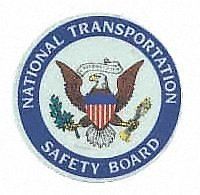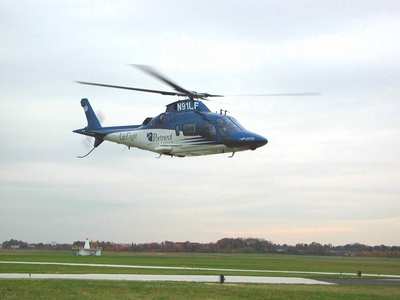FAA Says "It Will Never Happen Again"
 When pilot Mike Asset took a check
ride on March 22, 2001, he said the FAA examiner "had something
new" to show him. That "something new" ended up severely damaging
the helicopter and made the examiner a "contributing factor" to the
accident, according to the NTSB.
When pilot Mike Asset took a check
ride on March 22, 2001, he said the FAA examiner "had something
new" to show him. That "something new" ended up severely damaging
the helicopter and made the examiner a "contributing factor" to the
accident, according to the NTSB.
Asset was undergoing his annual check ride in an Agusta A109A
twin engine helicopter (file photo of type, below) at the Port
Allen Airport, Hanapepe, Kauai, Hawaii. The helicopter was
registered to Niihau Helicopters of Makaweli, Hawaii.
According to the NTSB Probable Cause Report, the pilot said the
designated examiner, Jeff Weller, told him during the flight that
he wanted to demonstrate a new way to handle a stuck rudder pedal
emergency. Here's what the NTSB report says:
According to the pilot's written statement, the check airman
briefed him on the intended maneuvers and added, "he had something
new to show [the pilot]." After completing the maneuvers and a few
engine out procedures, the check airman held the left pedal in an
offset position during takeoff to simulate a stuck left pedal
emergency. The pilot removed his feet from the pedals and flew the
traffic pattern with the pedal held by the check airman.

As the pilot set up for the simulated emergency landing with the
stuck pedal, the check airman explained a "new way to handle this
type of emergency situation." The check airman told the pilot to
pick a spot on the runway adjacent to the windsock and to bring the
helicopter to a hover above that spot. Though the pilot was
"totally unfamiliar" with the procedure, the check airman was
talking him through the approach. The check airman instructed the
pilot to reduce airspeed and increase collective pitch as the
helicopter neared the selected spot.
 The helicopter arrived over the spot
approximately 15- 20 feet above the runway. The check airman
instructed the pilot to increase the collective pitch in order to
keep the nose of the helicopter straight. Approximately 10 feet
above the ground, the check airman told the pilot to reach up and
"pull the throttle back in order to let the [helicopter] settle to
the ground."
The helicopter arrived over the spot
approximately 15- 20 feet above the runway. The check airman
instructed the pilot to increase the collective pitch in order to
keep the nose of the helicopter straight. Approximately 10 feet
above the ground, the check airman told the pilot to reach up and
"pull the throttle back in order to let the [helicopter] settle to
the ground."
As the pilot reduced the power, the helicopter "made a violent
180-degree turn to the left, and the main rotor rpm quickly bled
off, and [the pilot and check airman] struggled with the controls
to stabilize the [helicopter]." The helicopter landed hard on its
right main landing gear, which collapsed, allowing the helicopter
to roll over on the right side. The check airman shutoff the
engines, and the pilot turned off the electrical power.
In an additional statement provided by the pilot, he added that
during the downwind leg of the last traffic pattern, the check
airman told the pilot to remove his feet from the pedals. The pilot
said he did so and could not remember if or when he placed his feet
back on the pedals. He stated that at the time he reduced the
engine power, he only had his right hand on the cyclic and the
"check airman was fully on the [helicopter] controls."
The pilot stated he was not familiar with the maneuver, the
check airman had not demonstrated the maneuver, and it had not been
explained to him prior to the flight check.
The NTSB cited Weller's actions as contributing to the accident.
That got the FAA's attention.
"At the FAA we take reports of the National Transportation
Safety Board very seriously, and in this specific case we have made
changes so that things are done differently," said FAA spokesman
Allen Kenitzer. The changes were made shortly after the accident,
he told the Honolulu Advertiser.
FMI: NTSB Report
 Aero-News: Quote of the Day (04.28.25)
Aero-News: Quote of the Day (04.28.25) ANN's Daily Aero-Term (04.28.25): Decision Altitude (DA)
ANN's Daily Aero-Term (04.28.25): Decision Altitude (DA) ANN's Daily Aero-Linx (04.28.25)
ANN's Daily Aero-Linx (04.28.25) Airborne-Flight Training 04.24.25: GA Refocused, Seminole/Epic, WestJet v TFWP
Airborne-Flight Training 04.24.25: GA Refocused, Seminole/Epic, WestJet v TFWP Aero-News: Quote of the Day (04.29.25)
Aero-News: Quote of the Day (04.29.25)





